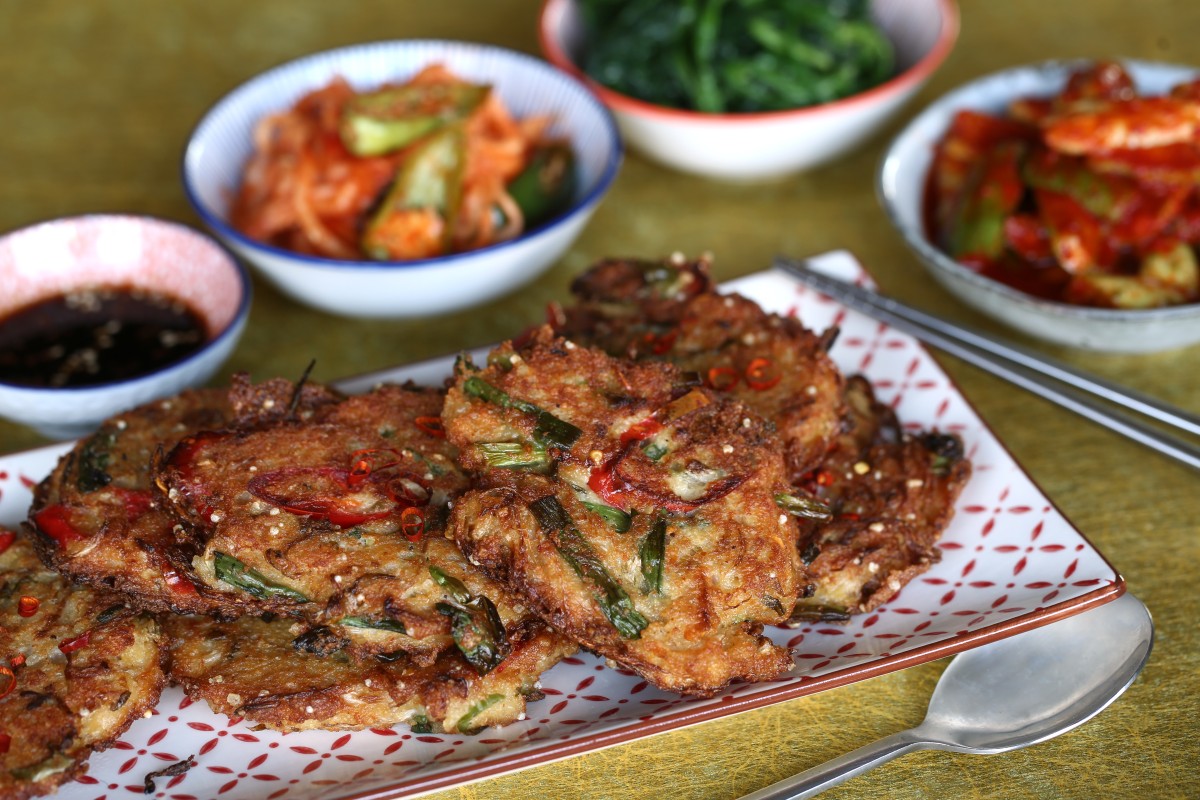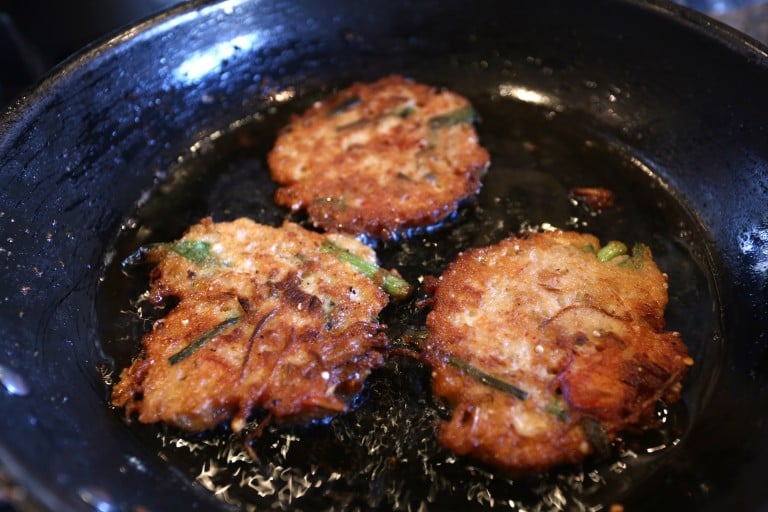
I first tasted bindaetteok - Korean mung bean pancakes - on a winter trip to Seoul. I made a hurried visit to Gwangjang Market in search of Korean pine nuts (which are excellent). I had a dinner booking just two hours away, but seeing the crowds at the Soon-hee Ne stall selling bindaetteok, I couldn't resist stopping for a quick snack. They were thick, hot, oily and delicious - the perfect thing to warm my stomach in the minus 11°C weather.
Be sure to buy yellow mung beans (which have been skinned) and not the green (unpeeled) ones. You can find them at shops selling Korean, Chinese and Indian ingredients. Start this recipe the day before you want to eat the pancakes, because the mung beans and glutinous rice need to be soaked overnight.
Use “old kimchi” that is funky and well fermented, not fresh. If you have a jar of kimchi at the back of the fridge that you had forgotten about, that’s the type to use.
You can substitute pork with chopped shrimp or squid. For vegetarian bindaetteok, simply omit the pork and add a little more mung bean sprouts.
Put the mung beans and glutinous rice in a bowl, add water to cover, then stir and drain off most of the liquid. Repeat the process two more times. After draining the third time, add fresh water to cover the ingredients by about 3cm (1¼in) and leave overnight to soak (put the bowl in the fridge if the kitchen is warm).
Drain the mung beans and glutinous rice in a colander, then put them in a food processor or blender and add 120ml (½ cup) of water (if there’s a lot of liquid in your kimchi jar, use 60ml [¼ cup] of the kimchi liquid plus 60ml of water). Process until the ingredients are ground – the mixture should be grainy, not smooth. Put the ground ingredients into a medium-sized mixing bowl.

Take the kimchi from the jar and let it drain briefly. Roughly chop the kimchi and mung bean sprouts and add them to the bowl. Cut the spring onions into 2cm (⅞in) lengths and the banana chillies into 3mm (⅛in) pieces, then thinly slice the garlic. Add these ingredients to the bowl along with the minced pork, egg and sea salt, then mix well. The consistency of the batter should be thick but moist; when it sits for a few minutes, a thinner liquid will float to the surface. If it seems dry, mix in a little more water.
Heat a skillet over a medium flame and add oil to the depth of about 5mm (¼in). When the oil is hot (170°C/340°F), use a ladle with a capacity of about 60ml (¼ cup) to scoop the mixture into the pan, pressing it into a pancake that’s about 5mm (¼in) thick. (I make them quite small; you can make larger ones, if you like.)

Pan-fry the bindaetteok for a few minutes on one side, or until medium-golden, then flip them over and pan-fry the other side until done. They should take about 6-8 minutes to cook in total; adjust the heat as needed if they brown too fast. Drain on paper towels. Stir the mixture each time before ladling it into the skillet to fry. Add more oil to the pan as needed.
While the bindaetteok are cooking, mix together the sauce ingredients.
Serve the bindaetteok with the sauce and whatever selection of banchan (Korean side dishes) you like.